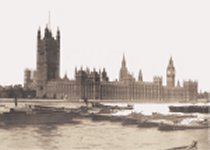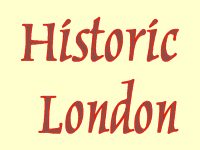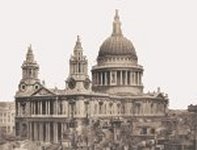|
|
Welcome to London in 1896
The London of 1896 is a city from a different time - quite literally.
As you look through these photos notice the complete absence of motor vehicles.
|
The London that we know today is a product largely of growth initiated during the Victorian era. Over the more than 60 years of Queen Victoria's reign (1837 to 1901) London grew to be the largest and most powerful city that the world had ever seen.
Until the invention of steam power (static engine by Watt, 1769; locomotive by Stevenson 1815), transport was limited to either horse delivery or what a man could carry. So cities were limited in size by the ability to get food and water to the people and, just as important, to remove the rubbish and waste.
During the 19th Century Victorian Engineers brought us
- the power of the steam engine to move people, goods and services (railway construction peaked from 1830 to 1850)
- the provision of proper running water (New River 1822)
- sewers to take away the waste water (Bazalgette, 1858 to 1865)
- gas (from 1807) to bring power and light to homes, offices and factories allowing life to continue fully after dark
- tunnels (1830 to 1840) to cross the river and allow the development of the underground railway (1863 onwards)
- electricity (1883 onwards) to give power light, heat and transport.
In all an incredible series of inventive feats - the Industrial Revolution applied to city life.
|
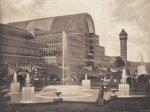
Crystal Palace in Sydenham. The exhibition hall built for the 1851 Great Exhibition.
|
|
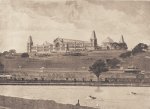
Alexandra Palace, built in 1873, burnt down within weeks, rebuilt and still in operation.
|
Here is a city that is proud of its history and its achievements. The Victorian age was not one for the timid, it was certainly not one where 'political correctness' ruled.
But is was one that was used to great achievements and grand celebrations.
The Victorians celebrated the power they gained through the Empire coupled with the power of applied science and management skills.
|
|
The pictures
Most of the pictures that you see here in sepia are from originals taken in 1894 to 1896. Many of those photos were 'enhanced' by the engraver - look out for the additions! We have carefully scanned the pictures and digitally enhanced them to recapture the original quality as far as practical. The text alongside them is also contemporary and is shown in italic typeface to identify it.
In many cases we have succeeded in taking a current photo as near as practical with the same view, and added some comments and information bringing you up to date.
|
Remember, as you look through these pictures that the motor car has not yet arrived (first omnibus 1899), the telephone has only recently been introduced (first exchange 1879) and that there is a huge gap between the rich and the poor.
Slavery had been abolished (1833), but servants are still frequently found, and workers are almost slaves in the factories.
|
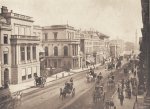
Horses, horses everywhere!
|
|
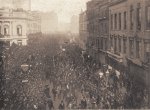
A political rally
|
Along with the material inventions are political and social ones too.
The vote is limited to male persons only (Reform Acts of 1832 and 1867), yet female emancipation is not a long time away.
Marx and Engels have invented Communism as an escape from the cruel iniquities they see.
Social philanthropists such as Jeremy Bentham (1748 to 1832) and Henry Mayhew (1849) followed in the footsteps of pioneers such as Captain Thomas Coram (1668 to 1751). They not only thought about the problems of the current society but campaigned to do something to improve the lot of the poor.
So join me as we take a visual trip into the London of the late 19th Century.
|
|
|
